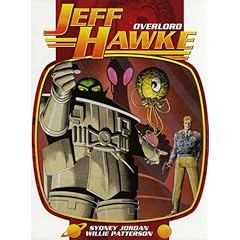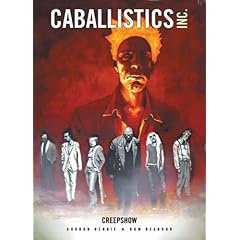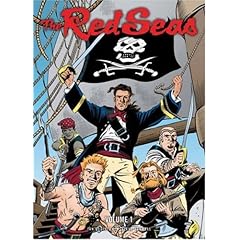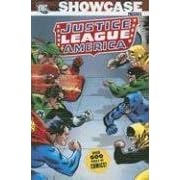
I found a used copy of this and... well. When I was a little kid (little kid, y'all dirty-minders, before Bart Sears gave her the biggest breasts in mainstream comics), I really liked Power Girl, but on the strength of the episodes reprinted here, and in some recent collections of '70s Justice Society titles, heaven only knows why. She's an abrasive character and her stories (these by Paul Levitz) are incredibly overwritten, with hideously rushed art by Joe Staton.
DC Comics has revamped and revised their continuities several times, and Power Girl has always been on the shit end of these odd editorial decisions, so this bizarre book collects stories from three iterations of the character. It culminates in a four-part miniseries from a couple of years ago, when Geoff Johns and Amanda Palmer tried to finally "work out" her origin. They couldn't do this by just issuing a new editorial fiat and starting fresh, because that would make sense. Instead, it's a braincurdling mess where various characters remember all these discarded old comic stories and if you, the reader, don't, tough fucking luck, because this book won't make any sense whatsoever.
To their credit, Johns and Palmer do make the character much more fun and vibrant, and you have to laugh at her patience with every male stealing a glance at her mammoth hooters, but it really is a missed opportunity. I had a good giggle when Jimmy Olsen sneaks a peek, anyway. By far the best thing about this book, and the only reason I would recommend it, is Conner's art, which has improved remarkably in recent years, and which I would love to see more of. The only DCU book I buy these days is Legion of Super-Heroes, which currently has terrible art. Can Ms. Conner draw that, please, Mr. DiDio?

Oddly enough, Amanda Conner also drew three episodes of Vampirella sometime in the mid-90s, but I don't like the style she was using then as much, although her pages are streets ahead of the three issues that followed her. I never read Vampirella before this collection of eight episodes by Grant Morrison and Mark Millar was released a couple of years ago. A reread doesn't persuade me I should've bothered. I do not understand Vampirella at all.
It's like this... I understand why superhero comics will have Power Girls with big bosoms, and why everybody from your Mary Janes to your Storms will have shower scenes with strategically placed thought bubbles or wisps of steam to hide the nudity. It's to titilate twelve-year olds, so kids can think "oooh, if only this word balloon wasn't here, I could see a nipple!" But kids aren't supposed to buy Vampirella comics, are they? So why does a comic with such patently adult-skewing business as this resort to the same silly artistic censorship as a book only kids can buy? Who's the target audience for this? (I probably don't want the answer to that question.)
As for the writing, it's much of what you'd expect from the mid-90s Morrison/Millar team, with high-concept oddness that reads like Invisibles-Lite in places filtered through the same "I'll keep you alive in torment for decades" tough guy schmaltz that made their 2000 AD collaborations such a struggle to read. There's even a character who survived an incident in the book and, thirty years later, came back to change history, kind of like Ragged Robin. And there are Anti-Vaticans and Judas Iscariots and serial killers that exist as viruses which take over people, kind of like John Sublime from his X-Men.
So there's just enough Grant Morrison fun to make this at least low-priority for his fans, but just enough Millar to temper it, and just enough confusing art to make it look like some of Morrison's more frustrating (non-Yeowell, non-Bond, non-Quitely) comics, where you're supposed to figure out what's going on based on something a minor character in the third panel on page twelve does and the artist forgets to draw.
Incidental to the proceedings, there's a tough-talking babe in a red one-piece who gets tied up and caressed by half-naked ladies every thirty pages or so. Just don't expect any payoff. Recommended if you really want everything Morrison's written, and have already shelled out for his crummy Spawn fill-ins and Mystery Play.
(Originally posted March 28, 2008 at hipsterdad's LJ.)














